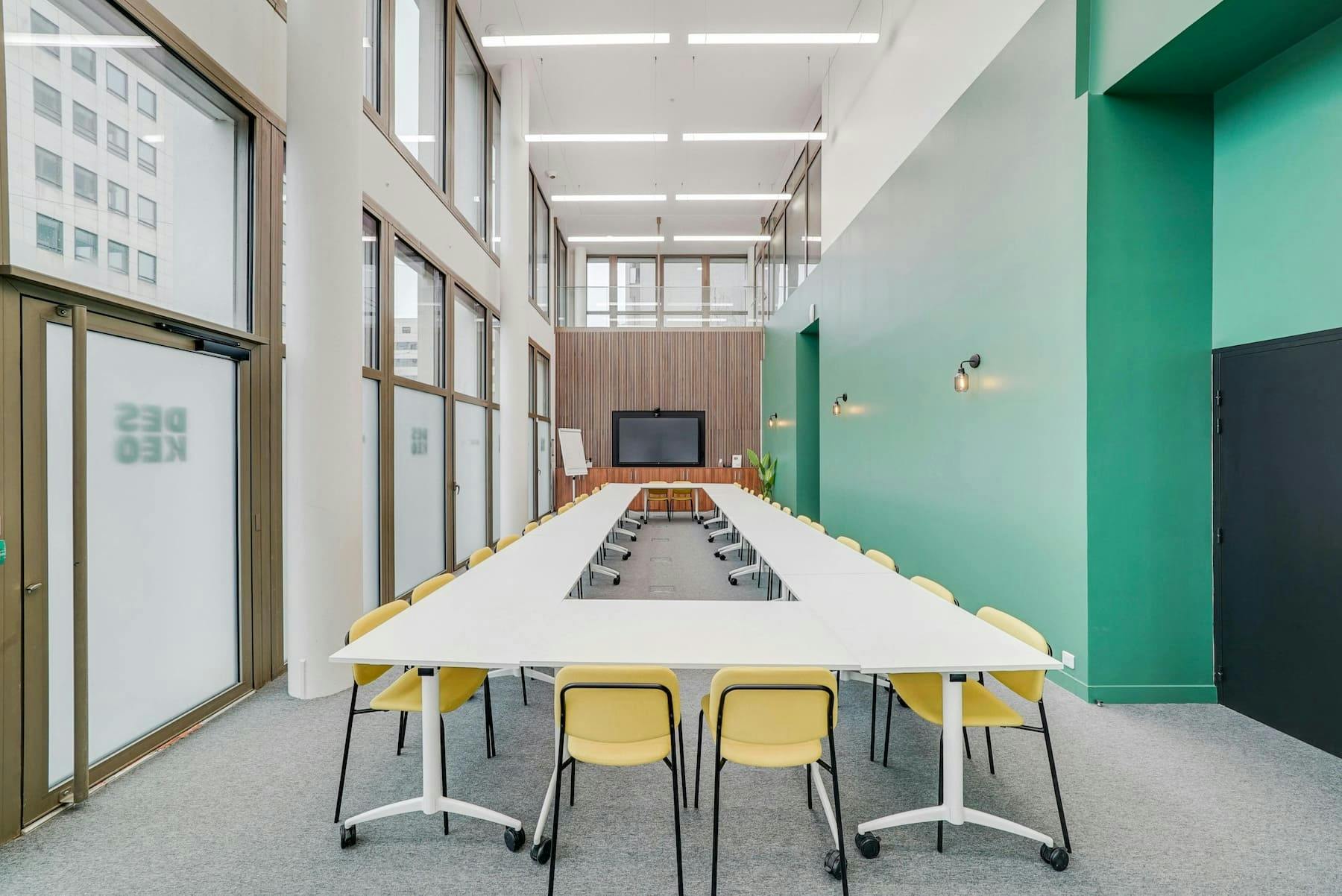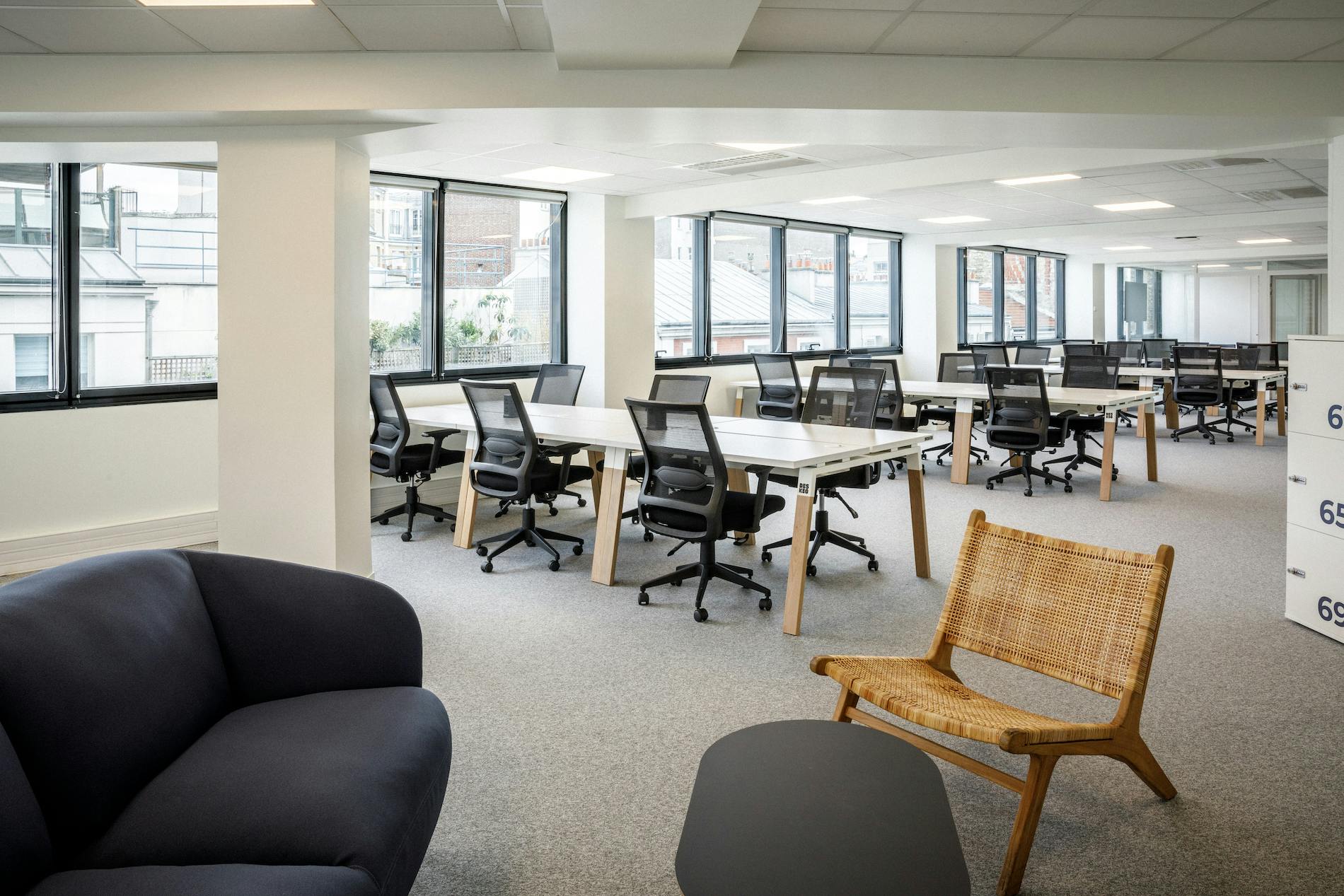

Achieving an ideal work rhythm
Exhaustion, stress, reduced productivity... A bad rhythm can be detrimental to your well-being and efficiency at work. That's why it's vital to do everything you can to preserve your mental health and maintain the precious balance between your professional and personal life.
Do you find that your work rhythm is not optimal? Would you like to set up a healthier routine? Then you've come to the right place!
In this article, Deskeo will reveal all its secrets to help you establish a work rhythm that respects your needs and enables you to maintain a high level of performance.
What is a good work rhythm?
Work rhythm is the pace at which you carry out your professional tasks, and the methodology you use to achieve them.
But to fully understand what we're talking about, let's take a closer look.
Definition and elements of a good work rhythm
A good work rhythm is not just about completing your tasks as quickly as possible, but rather about finding the right balance between efficiency and well-being.
To do this, it is important to take several factors into account:
- Human factors: age, experience, personality, family situation.
- Workspace: type and layout of your space (office, outdoor, etc.).
- Job-related factors: your role, responsibilities and associated pressures.
- Company conditions: corporate culture, working conditions, expectations.
Experts' views on the right work rhythm
Experts agree that a good work rhythm includes the ability to work consistently without feeling overwhelmed or stressed.
It's all about working at a steady but manageable pace, taking regular breaks to recharge your batteries.
To find the right work rhythm, specialists recommend :
- Working in blocks of time: This technique involves dividing your day into blocks of time and concentrating on one task at a time.
- Take regular breaks: Taking breaks every 90 minutes or so helps to improve concentration and productivity.
- Avoid multitasking: Multitasking tends to dilute concentration. Instead of focusing fully on one task, we concentrate on several smaller tasks. This can reduce efficiency and increase stress. So try to concentrate on one task at a time.
How do you find the right work rhythm when telecommuting?
COVID 19 has profoundly altered our working habits, giving telecommuting a prominent place. However, working at home or in the office is not at all the same thing... Many employees have therefore found themselves a little lost when faced with this new way of working.
Flexible teleworking options and their influence on the pace of work
Although telecommuting offers greater flexibility in time management, this freedom can also lead to confusion between professional and personal life.
That's why it's essential to establish a clear daily routine. Especially when you're fully telecommuting...
Full teleworking, commonly known as "home office", and its impact on the pace of work
Working from home can have a significant impact on your work rhythm.
For some employees, this can lead to working harder and longer, while for others it can result in distractions and reduced efficiency.
So it's vital not to fall into one or the other, and to maintain a healthy balance.
Don't know what to do? Then here are 3 recommendations to always keep in mind to maintain a good rhythm in a telecommuting environment:
- Set limits: Set clear working hours and stick to them.
- Take breaks: Make sure you take regular breaks to stretch, take a walk or simply change activity.
- Have a dedicated work space: If possible, try to set up a dedicated work area to minimize distractions.
Why is it important to have a good work rhythm?
An efficient work rhythm has many advantages, but there are 2 main ones:
- It allows us to be more efficient.
- It offers a better quality of life at work.
Greater productivity
This first point is obvious, but a good work rhythm is the key to optimal efficiency. By sticking to a sensible, healthy pace, you'll achieve more in less time and with less effort.
A more pleasant working atmosphere and a better quality of life at work
Secondly, a good work rhythm contributes to a pleasant working atmosphere. It can :
- reduce stress,
- prevent burnout,
- and improve your overall job satisfaction.
2 Essential tips for maintaining a good work rhythm
As you will have noticed, having a good work rhythm is essential. To achieve this, there are 2 simple things you can do:
- Divide your tasks according to their importance.
- Take regular breaks.
How do you effectively divide tasks according to importance?
To work efficiently, it's important to partition your tasks. You can do this by :
- Use the Eisenhower method: This method helps you prioritize your missions by classifying them into four categories:
- important and urgent,
- important but not urgent,
- not important but urgent,
- and not important and not urgent. - Set clear daily objectives: Every morning, draw up a list of tasks to be accomplished to help you stay focused and maintain your rhythm throughout the day.
How to organize breaks to maximize productivity?
Breaks are essential for maintaining a high level of performance. So don't hesitate to make them part of your routine:
- Take breaks every 90 minutes: According to research, our brains are only capable of concentrating for 90 to 120 minutes at a time. After that, you need to allow your brain to rest to help it recharge.
- Take active mini-breaks: Short breaks from physical activity can improve circulation and help you feel more energetic.
- Use the Pomodoro technique: This technique consists of :
- work for 25 minutes,
- stop for 5 minutes.
After four "Pomodoro" cycles, take a longer break of 15 to 30 minutes.

A future perspective on work rhythms
If we take stock, the traditional 9-to-5 work rhythm is disappearing. As companies become more flexible, the concept of work rhythm is also evolving.
Flexible working hours: less popular than before?
Flexible working hours can be an advantage, but they can also create stress for those who find it difficult to organize their time. So it's essential to learn how to manage your time effectively.
Are workers satisfied with their work rhythms?
A 2020 IPSOS survey reveals that most workers are not entirely satisfied with their current pace of work.
The main reasons given for this dissatisfaction are :
- lack of breaks,
- long working hours,
- and the inability to disconnect from work.
What could be the future of flexible working hours?
Faced with workers' dissatisfaction, new ways of making working hours more flexible could therefore emerge, such as :
- the 4-day work week, where you work fewer days but more hours per day,
- or less strict work schedules where you choose your start and finish times as long as you complete the required number of hours.
3 tips for getting back into the swing of things after a break
Whether you've taken parental leave or are returning from extended sick leave, getting back into the swing of things can be tough.
But don't panic, with a little method there's nothing tricky about it.
1. Adopt a gradual progression
Don't rush to get back to work on the first day. Start with simple assignments and gradually increase the complexity and volume as you get back into the swing of things.
2. Maintain a healthy lifestyle and get back to regular sleep
A healthy lifestyle, including a healthy diet, regular physical activity and sufficient sleep, is essential for maintaining a healthy work rhythm.
Try to get at least 8 hours' sleep so that you're fully rested for the day's work.
3. Don't overlook the importance of teamwork
Teamwork is crucial to maintaining a healthy work rhythm. Whether it's sharing workloads or getting support when you need it, a good team can make all the difference.
But to do this, you need to establish good habits to work together effectively:
- Communicate clearly with your colleagues,
- Respect deadlines,
- Be grateful for everyone's contributions.
Remember that every employee is important and plays an essential role in the team's success.
In short, achieving and maintaining an ideal work rhythm is crucial to your productivity and general well-being.
Adopt a balanced approach, taking into account your personal needs, your professional responsibilities and the dynamics of your workplace. With a little effort and patience, you can find the pace that best suits your professional style and needs.
- The ideal work rhythm will not be the same from one employee to the next.
- To work efficiently, it's important to take breaks and prioritize your tasks.
- Work rhythms have evolved and will continue to evolve (4-day week, flexible working hours, etc.).
- It's important to maintain the boundary between work and private life, especially when teleworking.

Contact Us
We find your Perfect fit!

